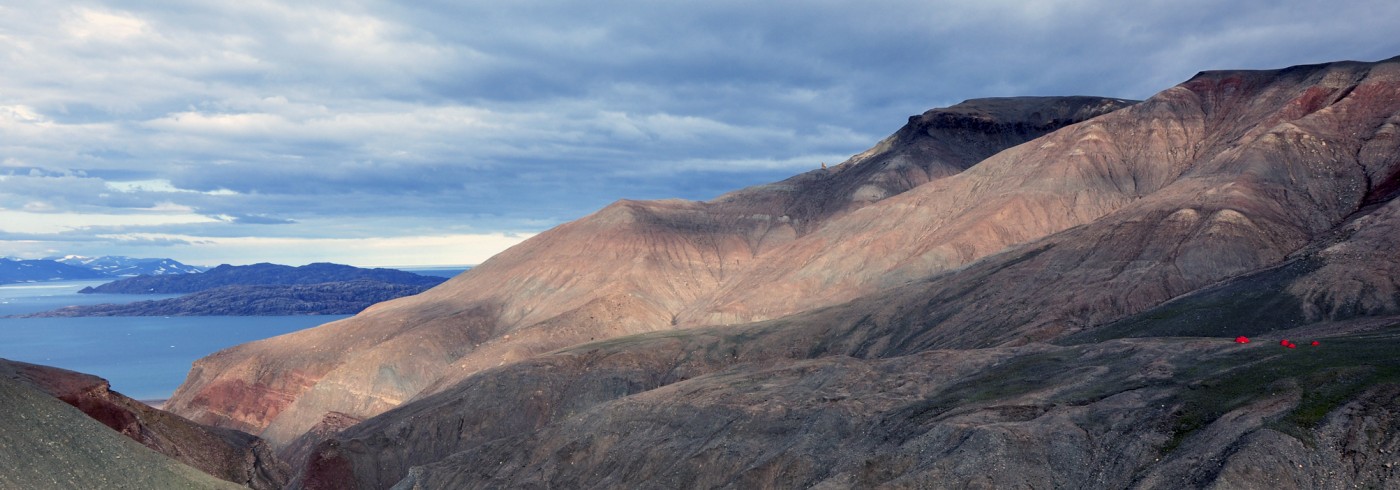Woke up to the sound of pounding rain on the tent roof. Warm and dry in the sleeping bag, but it means a muddy introduction to the work, or worse being grounded until the weather clears. We all eventually crept out of our tents and sat in the “lounge room” – the huge central tent where we keep all our supplies and communications equipment – to plan our day.
We had discussed what the potential objectives were the night before. The first being to orientate with the geology and locate the best rock layers for collecting fossils. The 24 hours of daylight had allowed us to check the surrounding outcrops using binoculars. There was a marked difference between the lower grey-green marine shale and the upper sequence of “red beds”, which are classic for Triassic strata but usually denote freshwater or terrestrial environments. Plan A therefore was to look at these “red bed” sequences, both because they were reportedly marine in the literature, but also because they were close by and could be easily sampled if the weather turned bad. Furthermore, according to the reports published by the Danish expeditions in the 1920s-1930s they should contain temnospondyl remains – these were superficially crocodile-like amphibians thought to have lived in marine habitats at the very beginning of the Triassic 250 million years ago. If we could confirm that the Kap Stosch temnospondyls hunted in the sea then we might have a vital clue about the ecological role of tetrapods in our earliest Triassic marine ecosystems.
After breakfast, and a large cup of specialty coffee (imported from Greece by Ben), we headed out leaving Lasse in camp to set up the communications equipment and sort out the fuel and provisions for the rest of our stay.
We returned five hours later soaked and covered in mud but with a better idea of what was going on with our rocks.

